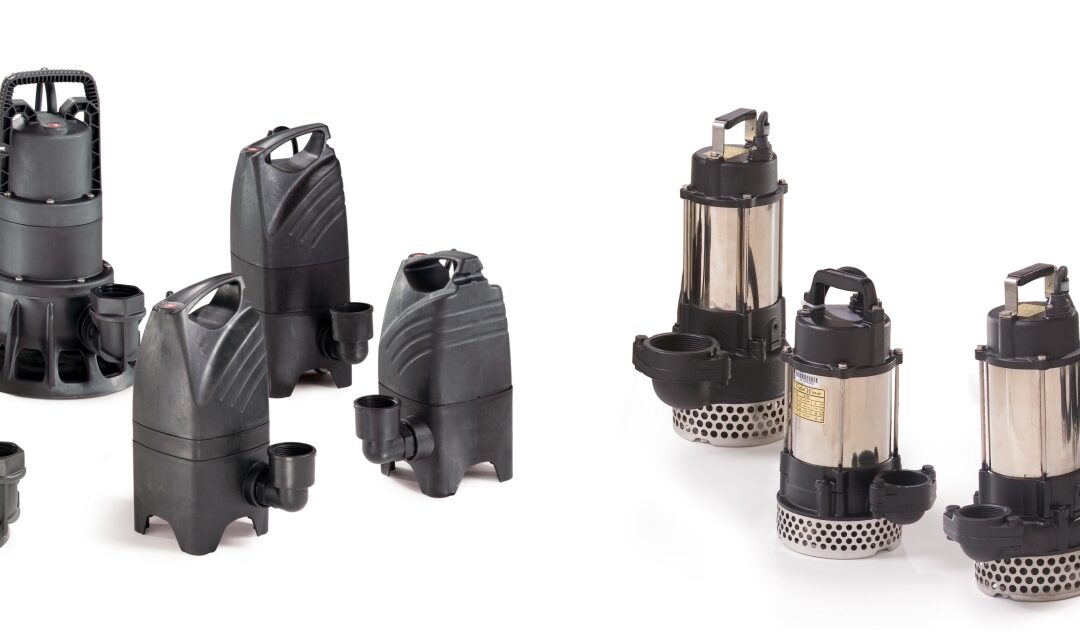Choosing the proper pond pump has always been a tricky procedure, even for pond professionals. Our first instinct is to just choose a pump based on the amount of flow that we want. For instance, many people use the rule that it is good to have 1500 gallons per hour (gph), per foot of spillway. So, if you wanted a waterfall that is two feet wide, you would want a 3000 gph pump. Other people will tell you to circulate the amount of water in your pond every hour. So, if you had a 3000 gallon pond you would want a 3000 gallon per hour pump. Other people will tell you to consider the pump’s energy usage and base your decision on that. I can remember back in the day, the Aquascape guys were saying that a 3,000 gallon per hour pump would cost about $30 per month to run. Of course, this will vary depending on the type of pump you choose as well as the electricity cost in your area. With all of these different things to consider, which pond pump should we choose?
Initial Considerations
Choice of pond pump is never an easy decision. If you are considering buying a pump for a new pond project or you are trying to replace a pump in an existing system, there are a bunch of things that you will want to consider. First things first, let’s cover some of the basics. There are basically 4 types of pumps to consider for your pond. The direct drive submersible pump, the direct drive external pump, the magnetic drive submersible pump and the hybrid asynchronous magnetic drive submersible pump. These pumps are all very much the same, yet very different at the same time. Since this is a post on pump basics, I won’t get into detail on each of these, that I can save for a different post.
You may have noticed that one of the above listed types of pumps is external and the rest are submersible. The external pump is usually only used for ponds or pools that people will be swimming in. These pumps sit outside of the pond as the name implies and they are grounded to the landscape with a long grounding rod. This makes them extremely safe for pond and pools that will contain people as there is no electricity in the water. The downside to these pumps is that they are hard to conceal (think wooden enclosure near the pond), they are loud (obviously any pump sitting next to your pond will be louder than one under the water), they are more difficult to install and maintain. The installation of an external pump will typically require some sort of base for it to sit on, some sort of enclosure and a grounding rod. These pumps are the type that are required for swimming pools, so if you have ever looked at the pump and filtration system of a swimming pool, you get the picture. These pumps are also harder to operate, because being out of the water, they require priming. There are pumps that claim to be self-priming, but just about all of these need to be primed at some point for them to be able to pull the water up and out of the pond or pool. The only time that I have used a pump like this is when building a swimming pond. If this is what you are building, then you really have no other choice. People shouldn’t be swimming in ponds with submersed pumps running.
The other three are submersible pumps and they are what the vast majority of people use in their ponds. All of these pumps are basically electric motors that turn an impeller that pushes water. Each type does it a bit differently, but again, that discussion is for another time.
Direct Drive
In general, the direct drive pump is going to be the most expensive to purchase and the most costly to run. These pumps will typically have a metal body and be fairly heavy for their size. Back in the day, when I first started installing ponds, the only thing available was the direct drive pump. These are the old standard workhorse of the industry and they are what run most of the larger water features that you see. They are also used on construction sites around the world to drain ditches, foundations and any sort of hole that needs draining. They are dependable and typically last from three to eight years, depending on how much they are run and how well they are suited to the application in which they are used. The direct drive pumps will typically provide a much higher maximum head height than the other types of pumps. If you are not familiar with this term, maximum head refers to how high a pump will pump water. So, a max head of twenty feet will mean that the pump should be able to pump water straight up to the top of a 20 foot pipe. This is important, as you will see, because every waterfall or pond has some head, even if it is flat. If you are trying to pump a good quantity of water uphill, the direct drive pump is probably for you.
Magnetic Drives
The other two types of pumps are magnetic drives that differ in ways but are very similar in others. In general, both will have less max head height than the direct drive pump, with the asynchronous pumps having a bit more than the standard mag drive pumps. These pumps will be cheaper to purchase, will typically have plastic bodies and will be more energy efficient and lighter than a direct drive pump. These are good choices for smaller ponds with lower waterfalls and shorter pipe runs. I have had many customers switch from direct drive pumps over the years to the new mag drive pumps and have very good results.
Deciding Factors
Whether you are building new, or you are replacing an existing pump, there are many factors to consider such as price of the pump, type of pump, price to run the pump, waterfall size, head height, etc., but the most important aspects to consider are desired water flow and total dynamic head. Without these two figures, you really can’t make an educated decision on which pump will be the best for you.
Water Flow
Your desired water flow should be determined based on how much water you want to see and what sort of and size of waterfall you have or wish to create. If you use the 1500 gph per foot of spillway rule as a starting point, you will be in the right ballpark. If you are using a waterfall box, you need to consider the width of the spillway. After that, you need to consider what type of stream and waterfall rock you are using. Very flat, shelf like waterfall rocks will allow you to see all of your water and can make less water look like more. Using larger, jagged rocks will make the water jump and twist more, but will make more water seem like less, because you will lose a lot of water between and under the rocks. Of course, the most interesting streams and waterfalls have a combination of flatter wide areas and narrow jagged areas to give the water as much movement and interest as possible. Just know that the more interest you want, the more water flow you need. Now, on the other hand, you don’t want to create a mammoth, thundering waterfall right next to your patio so that you can’t even hear your guests talking.
Total Dynamic Head
Total dynamic head is a calculation based on pump flow, waterfall height (head), pipe size, pipe length and number of fittings. You can use our Construction Help page to help you figure this out, or you can use this handy one-page Pump Sizing Sheet created by Atlantic. To use either of these, you will need to know your head height, which is the height that you will be pumping the water. If the point where your waterfall starts is four feet higher than the top of your pond water, then your head height is 4 feet. Pipe sizing is one of the most important factors when figuring total dynamic head. The friction caused by water being pushed through pipe and fittings has a significant effect on your total dynamic head. Most of the smaller ponds that we see use 2″ flex pipe between the pump and the waterfall. Two-inch flex PVC pipe will handle a maximum of 7500 gph. The more water that you push through a pipe, the more friction is created and the more head pressure. One of the best ways to lower your total dynamic head is to increase your pipe size. You will also need to consider how many fittings the water needs to flow through. Each fitting adds friction and more friction equals a higher dynamic head. Whatever you do, don’t choose your pump until figuring out your total dynamic head.
Pulling It All Together
Once you know your total dynamic head and your desired flow rate, you need to check out pump performance charts to find a pump that will be able to pump your desired flow rate at your total dynamic head calculation. Every pump has its’ own most efficient operating range. The closer that you can get to this most efficient range, the less that the pump will cost to run and the longer it will last. This is the challenging part, many pumps are likely to be able to pump the quantity of water that you want, but it’s likely that only a select few will fit your exact needs. Feel free to check out our Pick a Pump page to simplify the process.
If you have any questions during this process, please feel free to contact us for some help.

